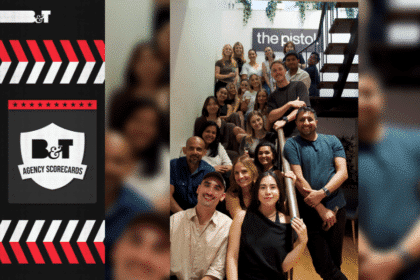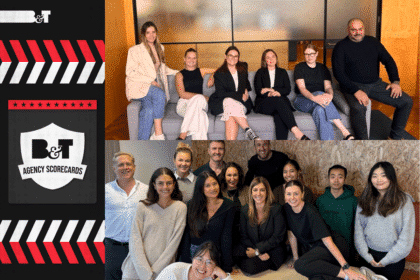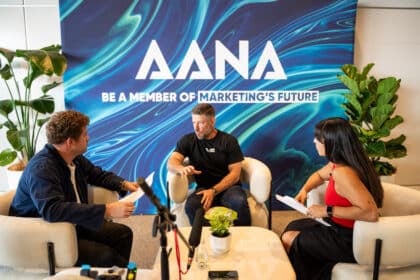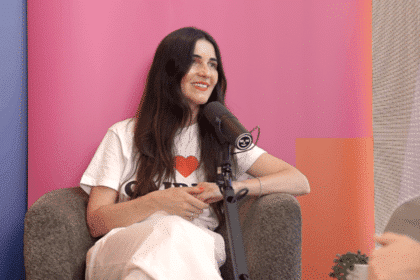Native Content can be a powerful tool in a world where consumers are increasingly running from disruptive ads, but how can marketers get the most out of the channel? B&T speaks to Avid Collective’s managing director Luke Spano.
With the media landscape becoming increasingly fragmented, advertisers are having to go to greater lengths to a) find their target audience and b) build a relationship with them. This is where native content can help.
As Avid Collective’s managing director and co-founder Luke Spano says, “native content is the only advertising channel that consistently creates value for the audience and the advertisers simultaneously”.
They are “the type of advertising that the consumer is opting in to consume, as opposed to the traditional disruptive experience where ads are kind of just trying to take you away from whatever you’re trying to do”.
When advertising was first born there were limited media channels (such as newspapers and radio), meaning consumers (or ‘people’ as I like to call them) would have to look at ads if they were to enjoy any media. This isn’t the case anymore. Not only is there a literal sea of content out there, but a lot of people actively pay money to avoid ads (Netflix, Spotify, Ad Blockers, etc).
This means advertisers have to make more of a value play to effectively engage audiences.
As Spano says, you must “look at the articulation of your product and your brand, with the audience in mind. So having a very customer-centric model, or a target audience-centric model, is really, really important”.
Publisher-first approach
One of the HUGE benefits of native content is that your customer is already engaged and voluntarily going to the publishing platform or consuming their social channels, Spano says.
“As a result, you’re driving much greater levels of attention, recall, and engagement – which leads to greater levels of impact”.
The key, however, he adds, is to let the publisher communicate the message in their own language.
“I think that’s kind of the fundamental thing, you’re going to exist in their ecosystem through their voice. You need to trust them to make it resonate,” he says.
“The key is to share the message you want to communicate but allow the publishers to tailor it to their audience,” he said. Benefit from their “expertise” in making your brand resonate”.
A Resource Intensive and Fragmented Market
Despite the undeniable benefits of native content, it can be heavily resource intensive. Especially when it is done at scale.
“You’ve got the resource intensiveness of the format in terms of the more complex creative required to be produced for the channel. You’ve got the fragmented nature of the market with thousands of different publishers out there in Australia alone. And then there’s not really any standardisation that exists in the space,” Spano says.
“Different publishers are using different words for the same products. “So, it’s been really difficult for brands or agencies to buy native content at any level of scale or efficiency”.
Having Everything All In One Place
Avid Collective, Spano says, is focused on “unlocking native content as a channel for advertisers by solving all of those individual problems and wrapping them into one solution”.
Called “the home of native content” Avid Collective has a network of over 140+ digital publishers that is accessible through its proprietary end-to-end platform, which includes a targeting and amplification engine to maximise engagement with the right audiences.
Publishers on the platform include Pedestrian Group, Urban List, Daily Mail Australia, Junkee and Punkee, Forbes Australia, The Guardian, frankie, Buzzfeed Australia, and We Are Explorers, among many more.
“By aggregating all of the partners into one network, creating a set of standardised shared language for everyone to use, and building a workflow platform that connects the advertiser to every individual publisher, we’ve solved the resource-intensive problem by building the solution all into one system, one platform, one place of access”, Spano says.
Brands can “use a range of different filters” based on the “many different types of briefs and objectives” they might have. They can also search by both type of product and the types of publisher.
It’s also important to remember, Spano says, that native content is not limited to the written word.
“It can be social posts, it can be video, a lot of the publishers we work with do interactive content”.
“So they do an interactive itinerary or map if they’re trying to bring a travel destination together, they do polls or quizzes if trying to collect insights or info from an audience, they do different types of content formats that can really bring to life, the brand message and the behavior you’re trying to focus on.”
“We also have a team of experts that are supporting clients at each stage of the process,” Spano says. Despite having a very powerful platform, we understand brands want to maximise how they leverage each element of our offering so we’re super hands-on in guiding brands and agencies through the campaign process and will put together bespoke solutions for clients we’re working closely with.
Find more about Avid Collective here.








